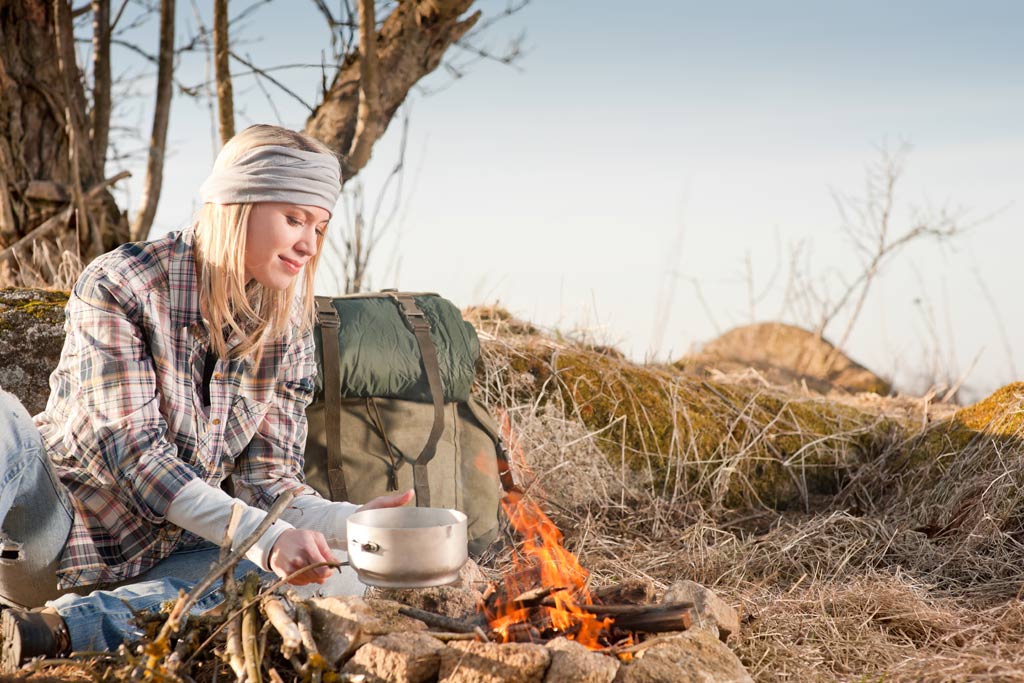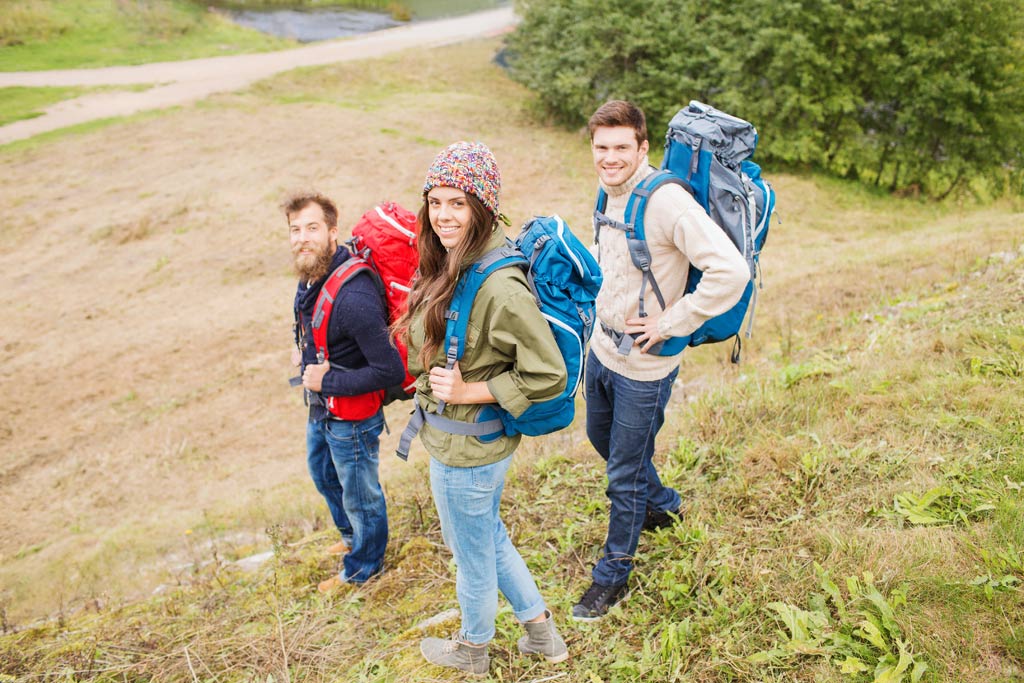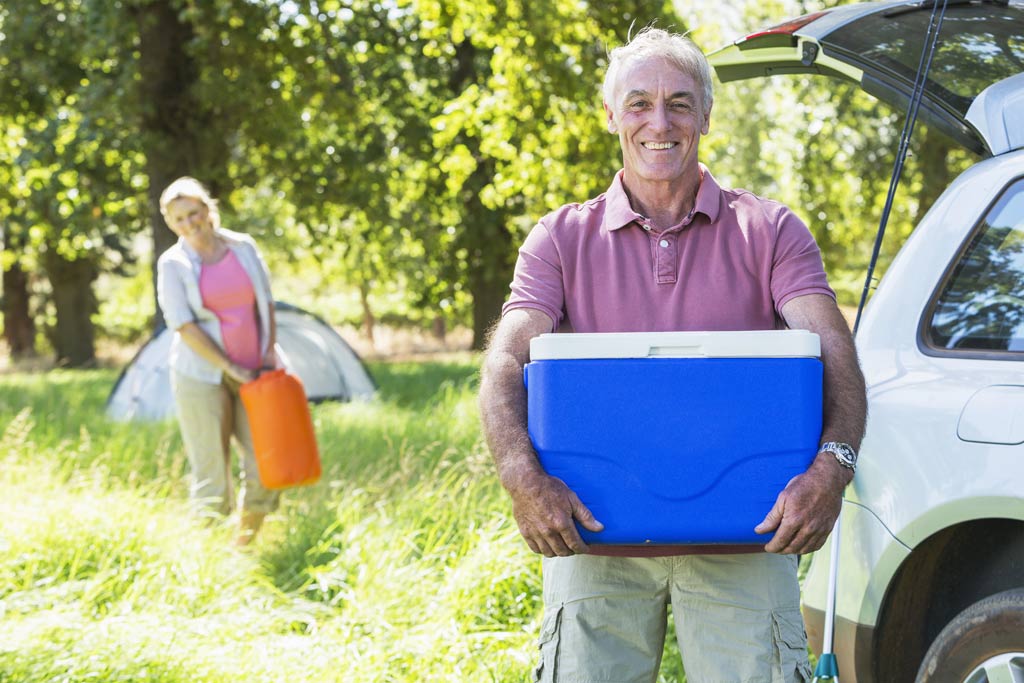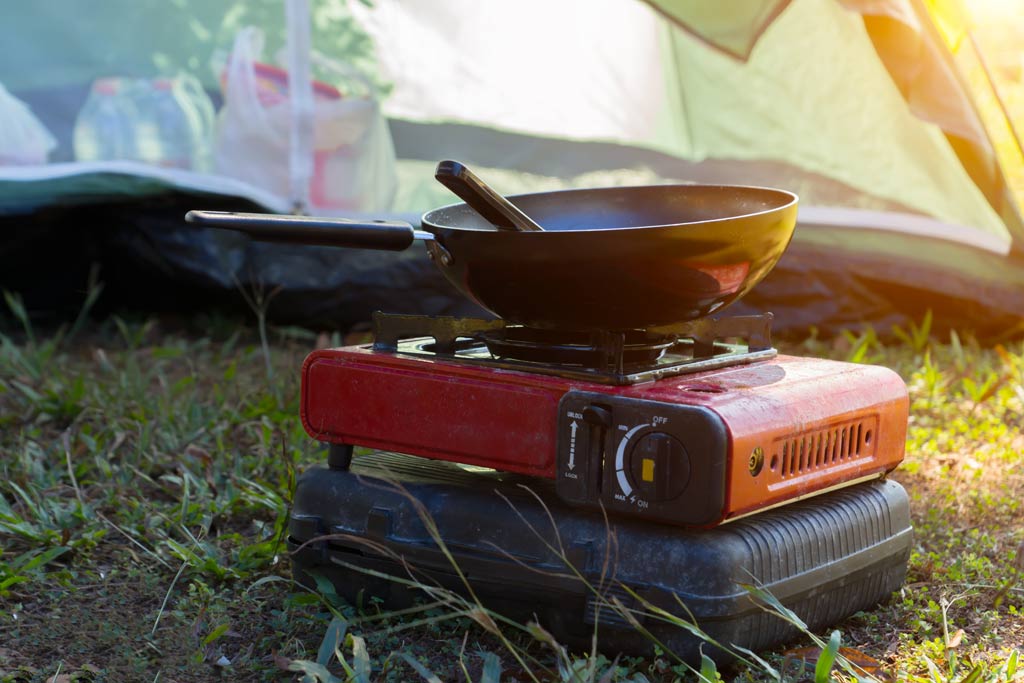Load up the vehicle, pack up the adventurers, and check your list to make sure you have all the camping essentials – including food safety!
Camping and hiking are great ways to exercise and appreciate nature. But they also create hunger – and food that is not stored and handled properly, can create food illness.

General Food Safety Rules for Outdoor Eating
Camping provides a great opportunity to get outside with friends and family. Begin your outdoor adventure with these food safety camping tips:
- Plan ahead: decide what you are going to eat and how you are going to cook it; then plan what equipment you will need.
- Pack safely: use a cooler if car-camping or boating, or pack foods in the frozen state with a cold source if hiking or backpacking.
- Separate: Keep raw foods separate from other foods.
- Keep Cool: Never bring meat or poultry products without a cold source to keep them safe.

- Keep Clean: Bring disposable wipes or biodegradable soap for hand- and dishwashing. make sure to clean your hands before and after handling food.
- Safe Water: Plan on carrying bottled water for drinking. Otherwise, boil water or use water purification tablets.
- Do not Litter: Do not leave trash in the wild or throw it off your boat.
- Discard Leftovers: If using a cooler, leftover food is safe only if the cooler still has ice in it. Otherwise, discard leftover food to be safe.
- Learn about cross contamination, cold and hot food safety, best practices for personal hygiene, and foodborne illnesses.
- Food Manager ANSI Certification: SALE $99.00
- Food Handler ANSI Training for only $7.00!
- Enter Promo "train10off" at Checkout
Food Safety for Hiking
Hiking involves preparation for the terrain and for food and water. You want to keep your hiking food at cooler temperatures (40°F and below) – to prevent bacterial growth and spoilage.
Here are some basic food and water safety tips for hiking:
- Don’t take fresh, perishable food. Eat only preserved, dried, and dehydrated foods.
- Insulated food bag. Use a neoprene thermal insulated food bag – to keep food cool and clean.
- Bring clean water or use water filters. While the water flowing in the streams and rivers of the backcountry may look pure, it can still be contaminated with bacteria, viruses, parasites, and other contaminants. When planning on hiking, it is important to remember your water needs.
Short Hikes: One meal and some snacks are all that’s needed for a short hike.
Long Hikes: Planning meals for a longer hike or camping trip requires more thought. You have to choose foods that are light enough to carry in a backpack and that can be transported safely.

Food Safety with Coolers
- Cool food prior to leaving. A cold cooler for perishable food is essential. Pack your coolers with several inches of ice, blocks of ice, or frozen gel-packs. Store food in watertight containers to prevent contact with melting ice water.
- Freeze or Cool Items Prior to Trip. Freeze items that can be frozen at home prior to leaving. Items like juice boxes, hamburger patties, individual chicken breasts and hot dogs can be frozen and can slowly thaw in your cooler for you to use on your trip. Put sodas, jelly and other items that will end up in your cooler in the refrigerator overnight.
- Bring two coolers: Bring one cooler for drinks and snacks and another for perishable food. The drink cooler will be opened and closed a lot, which lets hot air in and causes the ice to melt faster
- Keep Cooler in Shade. It is important to keep it closed, out of the sun, and covered, if possible, for further insulation.

Portable Stove & Butane Canister Safety
Popular on camping trips, portable butane stoves are useful, but can also be dangerous.
Butane vs. Propane
Butane and propane, both combustibles and derived from petroleum, are often and commonly used as cooking fuels especially in portable stoves for camping.
Propane burns better in cold weather and high altitudes compared to other liquid fuels and has a lower boiling point compared to butane.
Butane canisters are more lightweight and is compressed at a lower pressure compared to propane. The biggest drawback of butane is that it does not work below freezing point and not burn well at high altitudes.
There is identical heat output for both, but butane has approximately 12% more energy than propane. This means you will be able to cook 12% longer with the same amount of butane than with propane.
Conclusion: A butane camp stove, is lightweight and more convenient to carry, which are also important factors to consider if you will go on long-distance trips. But, need to buy packs in packs before your trip or along the way – because butane is not readily available at most gas stations.
Canister Safety
- Always store canister upright
- Use soapy water to check for leaks
- Never use or store a propane cylinder indoors
- Never try to repair a damaged cylinder

Summary
Camping and hiking can be a lot of fun. Just remember to plan ahead and pack food properly and safely or a food illness can occur.
